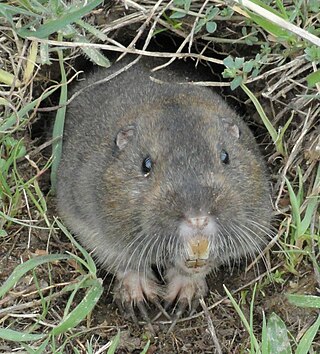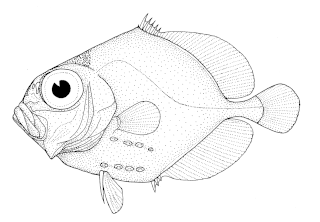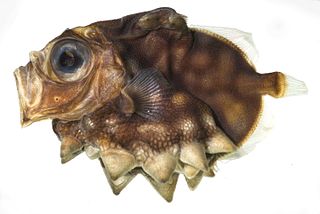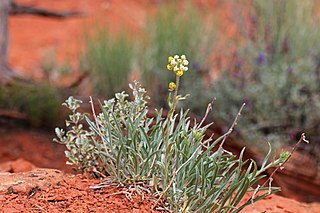| Allocyttus | |
|---|---|
 | |
| Allocyttus verrucosus | |
| Scientific classification | |
| Domain: | Eukaryota |
| Kingdom: | Animalia |
| Phylum: | Chordata |
| Class: | Actinopterygii |
| Order: | Zeiformes |
| Family: | Oreosomatidae |
| Subfamily: | Oreosomatinae |
| Genus: | Allocyttus McCulloch, 1914 |
| Allocyttus | |
|---|---|
 | |
| Allocyttus verrucosus | |
| Scientific classification | |
| Domain: | Eukaryota |
| Kingdom: | Animalia |
| Phylum: | Chordata |
| Class: | Actinopterygii |
| Order: | Zeiformes |
| Family: | Oreosomatidae |
| Subfamily: | Oreosomatinae |
| Genus: | Allocyttus McCulloch, 1914 |
There are currently four recognized species in this genus: [1]

Oreo is a brand of sandwich cookie consisting of two cocoa biscuits or cookie pieces with a sweet fondant filling. It was introduced by Nabisco on March 6, 1912, and through a series of corporate acquisitions, mergers and splits both Nabisco and the Oreo brand have been owned by Mondelez International since 2012. Oreo cookies are available in over one hundred countries. Many varieties of Oreo cookies have been produced, and limited-edition runs have become popular in the 21st century.

The common name dory is shared by members of several different families of large-eyed, silvery, deep-bodied, laterally compressed, and roughly discoid marine fish. As well as resembling each other, dories are also similar in habit: most are deep-sea and demersal. Additionally, many species support commercial fisheries as food fish. Most dory families belong to the order Zeiformes, suborder Zeioidei:

Oreo O's is a breakfast cereal that consists of Oreo-flavored O-shaped pieces of cereal. It was conceived of by an Ogively & Mather NYC advertising employee and introduced in 1997 by Post Cereals. In 2001 the cereal got a new recipe with real creme filling. A variation of Oreo O's called Extreme Creme Taste Oreo O's contained Oreo filling-flavored marshmallows.

Pocket gophers, commonly referred to simply as gophers, are burrowing rodents of the family Geomyidae. The roughly 41 species are all endemic to North and Central America. They are commonly known for their extensive tunneling activities and their ability to destroy farms and gardens.
A. niger may refer to:
Oxeye may refer to:

Oreosomatidae, the oreos, are a family of marine fish. Most species are found in the Southern Hemisphere, inhabiting continental slopes down to about 1,000 m (3,300 ft) deep. Most of them are 43 cm at most, with the largest species reaching a length of 60 cm. Though they are small, they often have incredibly elongated lifespans, probable result of living in the deep sea with the warty oreo being able to live up to 210 years, which puts it at one of the longest living vertebrates on Earth. They borrow their name from the Greek oreos (mountain) and somas (backs) for the shape of their backs. They are very flattened vertically-laterally, with 5 to 8 rays in their dorsal fin, and 2 to 4 in the anal fin, and only 1 spine in the pelvic fins. The upper part of the mouth is protractile, allowing them to snatch up little fishes, copepods, amphypods, shrimp, krill, and small cephalopods, their main diet.

Pseudocyttus maculatus, the smooth oreo or smooth dory, is an oreo, the only species in the genus Pseudocyttus. It is found in all southern oceans at depths of between 400 and 1,500 metres. Its length is up to 60 centimetres (24 in).

The warty oreo is an oreo found in all southern oceans at depths of between 300 and 1,600 m. Its length is up to 42 cm.
The black oreo is an oreo of the family Oreosomatidae, found around Australia and New Zealand between latitudes of between 43°S and 55°S at depths of between 560 and 1,300 m.

Hydrox is a cream-filled chocolate sandwich cookie owned and manufactured by Leaf Brands. It debuted in the United States in 1908, and was manufactured by Sunshine Biscuits for over 90 years. Hydrox was largely discontinued in 1999, three years after Sunshine was acquired by Keebler, which was later acquired by Kellogg's. In September 2015, the product was reintroduced by Leaf Brands.

Neocyttus is a genus of oreos.

Oreosoma atlanticum, also known as the ox-eyed oreo, is a species of oreo found in oceanic deep waters. It is the only known member of its genus. Although adults are more similar in shape to other oreos, the juveniles have a distinctive plating/armor in their skin, which is spiked and probably makes them harder to eat for any hostile creature. Adults lack that plating, and, as other oreos, they have a protractile mouth and very large eyes, with small scales.

The Bean's sawtooth eel is an eel in the family Nemichthyidae. It was described by Theodore Gill and John Adam Ryder in 1883. It is a marine, deep water-dwelling eel which is known from throughout the Atlantic Ocean, the Indian Ocean, and the Western Pacific Ocean, including Iceland, South Africa, Réunion, and Australia. It dwells at a depth range of 0–5998 metres, and leads a solitary lifestyle. It migrates vertically at night. Males can reach a maximum total length of 78-80 centimetres, making it the largest sawtooth eel.

A deep-fried Oreo is a dessert or snack consisting of a chocolate sandwich cookie which is dipped in batter and deep fried. It may be served with different toppings, most commonly powdered sugar. Deep-fried Oreos are generally made using Oreo-brand cookies, hence the name, but other chocolate sandwich cookies can be used.
Oreoleptidae is a family of flies. The family was established in 2005 on the basis of the type species Oreoleptis torrenticola placed in the monotypic genus Oreoleptis. The only known species was collected from the Rocky Mountains where the larvae grow in torrential streams. Larvae have also been found in groundwater wells. The larvae are similar to those of Athericidae and Tabanidae but with long crocheted false-legs (prolegs) arising from abdominal segments 2-7. The larvae have hollow mandibular hooks.
Oreo is a genus of Australian araneomorph spiders in the family Trachycosmidae, and was first described by Norman I. Platnick in 2002. The name derives from the Oreo cookie. The type species has a black and white abdomen, although such coloration is common among gallieniellids.

Oreocarya is a genus of flowering plants in the family Boraginaceae. There are about 63 species and its native range extends from western and central Canada, through western United States to north Mexico. It is part of subtribe of Amsinckiinae.
Allocyttus guineensis, the Guinea oreo, is an oreo of the family Oreosomatidae, found in the Eastern Atlantic Ocean.
Allocyttus folletti, the oxeye oreo, is an oreo of the family Oreosomatidae, found in the North Pacific Ocean, from Japan to the Bering Sea and around to southern central California.